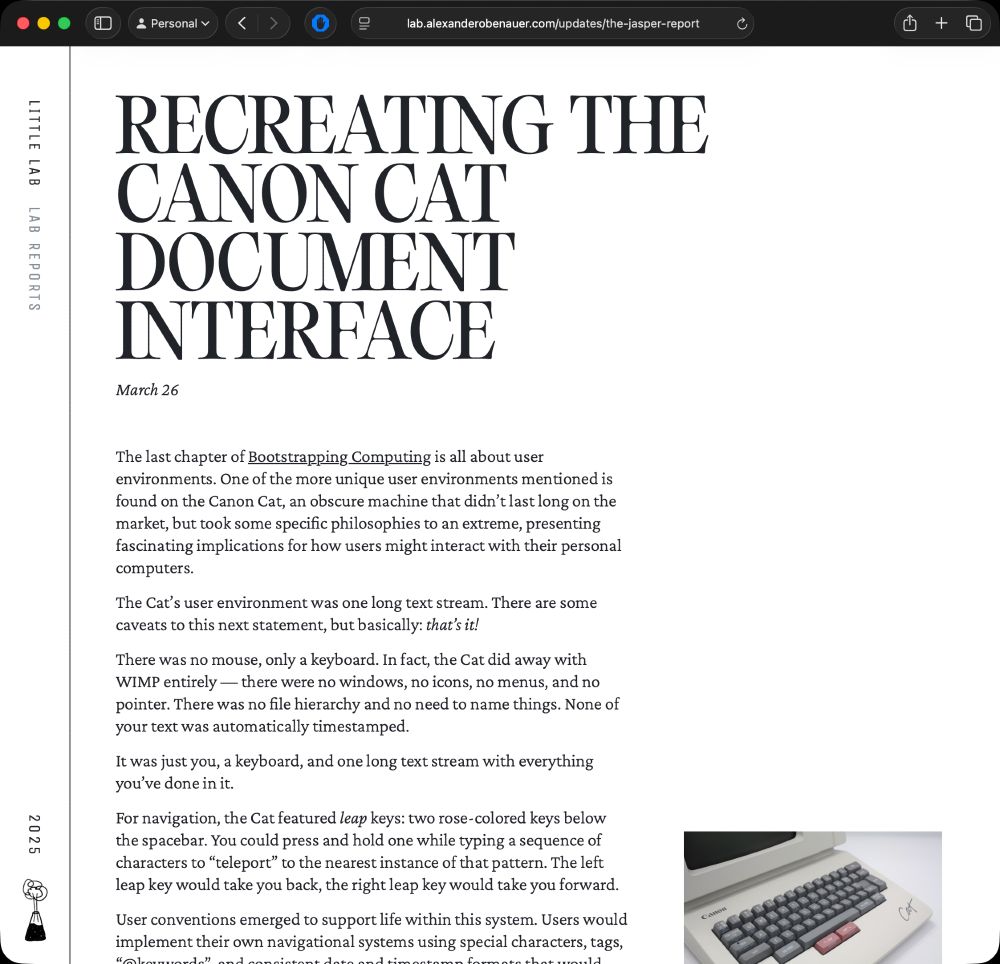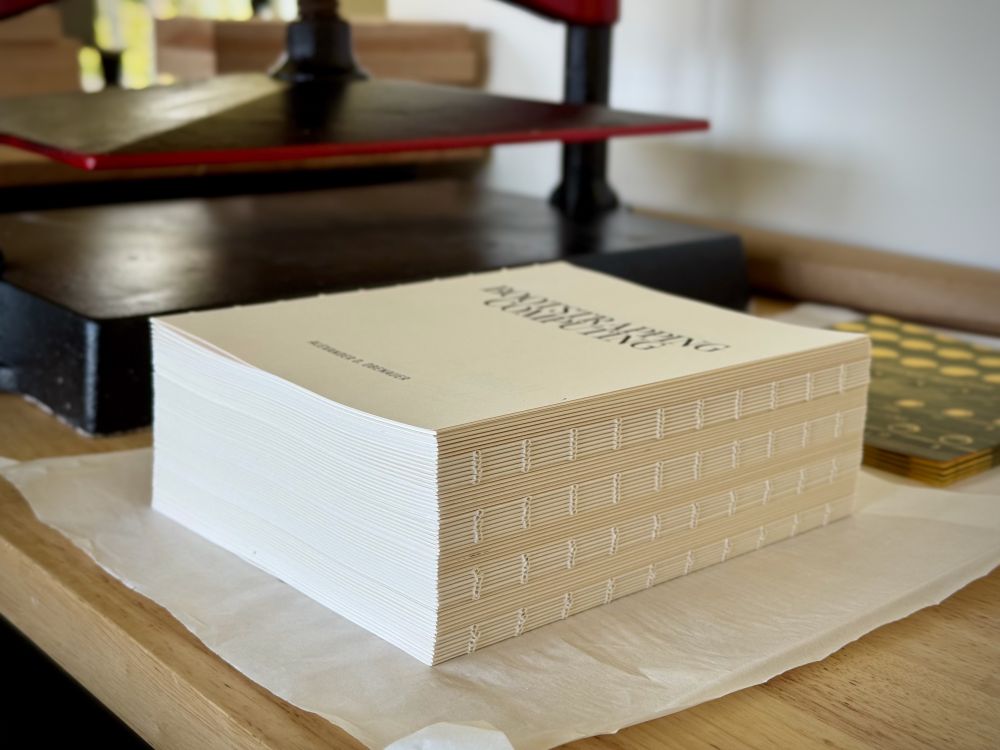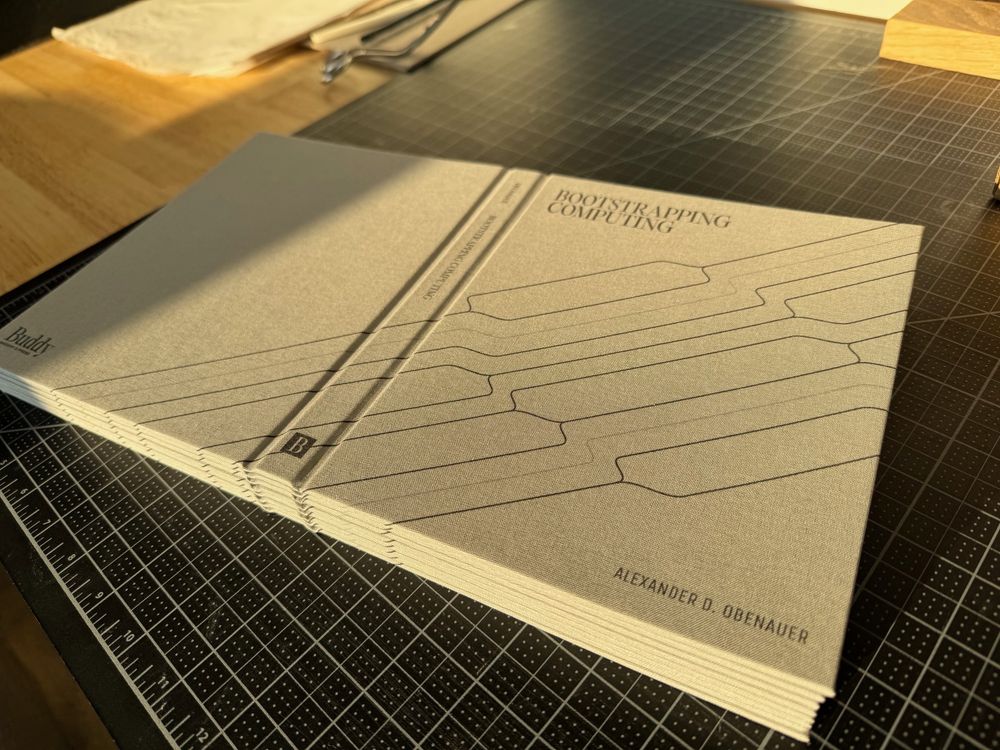
→ alexanderobenauer.com
That's what we did here, and Owen knocked it out of the park. Love his choices of color, scene, etc.
Earlier this year, we started our publishing company and released our first title, Bootstrapping Computing.
The full-color paperback is available for preorder now, and will be released on December 1.



That's what we did here, and Owen knocked it out of the park. Love his choices of color, scene, etc.
Earlier this year, we started our publishing company and released our first title, Bootstrapping Computing.
The full-color paperback is available for preorder now, and will be released on December 1.



Earlier this year, we started our publishing company and released our first title, Bootstrapping Computing.
The full-color paperback is available for preorder now, and will be released on December 1.
Some highlights in the thread. lab.alexanderobenauer.com/updates/corp...
Some highlights in the thread. lab.alexanderobenauer.com/updates/corp...
We signed up for tons of big co's newsletters to see who we'd catch selling your email address.
Only one truly big co did it, and they did it nonstop: NYT.
https://openai.com/index/fighting-nyt-user-privacy-invasion/
We signed up for tons of big co's newsletters to see who we'd catch selling your email address.
Only one truly big co did it, and they did it nonstop: NYT.
Making books and tending the fire.




Making books and tending the fire.
It’s about why the work we do in pursuit of composable systems and malleable software matters a great deal.
Link in reply & background in thread!
On the moral imperative for composable systems & malleable software.


It’s about why the work we do in pursuit of composable systems and malleable software matters a great deal.
Link in reply & background in thread!
By your nature, you hold some principle that is in conflict with reality; you can see yourself circling around it.
By your nature, you hold some principle that is in conflict with reality; you can see yourself circling around it.
Orionid meteor shower, and Comet Lemmon, all under a new moon.
Orionid meteor shower, and Comet Lemmon, all under a new moon.
These kinds of sentences show up in the most fundamental papers that I return to year after year.
They sound silly out of place, but in my favorite works, they're used to build up to essential guiding ideas and insights!

These kinds of sentences show up in the most fundamental papers that I return to year after year.
They sound silly out of place, but in my favorite works, they're used to build up to essential guiding ideas and insights!
On the moral imperative for composable systems & malleable software.


On the moral imperative for composable systems & malleable software.
Vibe code the first version. Investigate the code for its shape, complexities, needs, failure points.
Then scrap all that and engineer a new version.
I recreated Jef Raskin's 1987 'Canon Cat' user environment and observed myself as I lived in it for a week.
Implementation details, surprises, and more in the essay.
(Why touch grass when you can read 3.2k words on user environments?)
Vibe code the first version. Investigate the code for its shape, complexities, needs, failure points.
Then scrap all that and engineer a new version.
I recreated Jef Raskin's 1987 'Canon Cat' user environment and observed myself as I lived in it for a week.
Implementation details, surprises, and more in the essay.
(Why touch grass when you can read 3.2k words on user environments?)

I recreated Jef Raskin's 1987 'Canon Cat' user environment and observed myself as I lived in it for a week.
Implementation details, surprises, and more in the essay.
(Why touch grass when you can read 3.2k words on user environments?)
We can submit questions for TBL in advance, so I’ve been considering what I’d ask.
What would you ask?
We can submit questions for TBL in advance, so I’ve been considering what I’d ask.
What would you ask?
Also added some graphics made for the User Environments zine to the Canon Cat / Jasper essay 🙂


Also added some graphics made for the User Environments zine to the Canon Cat / Jasper essay 🙂
It will match on unlabeled first params for dot calls on any expression of the right type.

It will match on unlabeled first params for dot calls on any expression of the right type.
The second lab report is out now, on the environment's programming language.

The second lab report is out now, on the environment's programming language.
Making books and watching turkeys.




Making books and watching turkeys.
I'm kicking off a series of lab reports that take a deep dive into this environment's implementation.


I'm kicking off a series of lab reports that take a deep dive into this environment's implementation.
I'm kicking off a series of lab reports that take a deep dive into this environment's implementation.


I'm kicking off a series of lab reports that take a deep dive into this environment's implementation.
This had the delightful effect of slowing down time, and the associations of places with times improved my (typically poor) recall: the years on the road are filled with inseparable memories.

This had the delightful effect of slowing down time, and the associations of places with times improved my (typically poor) recall: the years on the road are filled with inseparable memories.
Not that I didn’t enjoy it before, but there’s some kind of forced balance that I think I needed.
Not that I didn’t enjoy it before, but there’s some kind of forced balance that I think I needed.









